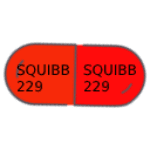Uses
Cephalexin is used to treat certain infections caused by bacteria such as pneumonia and other respiratory tract infections; and infections of the bone, skin, ears, genital, and urinary tract. Cephalexin is in a class of medications called cephalosporin antibiotics. It works by killing bacteria.
Antibiotics such as cephalexin will not work for colds, flu, or other viral infections. Using antibiotics when they are not needed increases your risk of getting an infection later that resists antibiotic treatment.
Side Effects Of Cephalexin
Cephalexin may cause side effects. Tell your doctor if any of these symptoms are severe or do not go away:
- nausea
- diarrhea
- vomiting
- heartburn
- stomach pain
- rectal or genital itching
- dizziness
- extreme tiredness
- agitation
- confusion
- headache
- joint pain
Some side effects can be serious. If you experience any of the following symptoms, call your doctor immediately or get emergency medical treatment:
- watery or bloody stools, stomach cramps, or fever during treatment or for up to two or more months after stopping treatment
- rash
- itching
- hives
- swelling of the face, throat, tongue, lips, and eyes
- difficulty breathing or swallowing
- wheezing
- a return of fever, sore throat, chills, or other signs of infection
- hallucinations (seeing things or hearing voices that do not exist)
Warnings & Precautions
Before taking cephalexin:
- tell your doctor and pharmacist if you are allergic to cephalexin; other cephalosporin antibiotic such as cefaclor, cefadroxil cefazolin (Ancef, Kefzol), cefdinir, cefditoren (Spectracef), cefepime (Maxipime), cefixime (Suprax), cefotaxime (Claforan), cefotetan, cefoxitin (Mefoxin), cefpodoxime, cefprozil, ceftaroline (Teflaro), ceftazidime (Fortaz, Tazicef, in Avycaz), ceftibuten (Cedax), ceftriaxone (Rocephin), and cefuroxime (Zinacef); penicillin antibiotics; or any other medications. Also tell your doctor if you are allergic to any of the ingredients in cephalexin capsules, tablets, or suspension. Ask your pharmacist for a list of the ingredients.
- tell your doctor and pharmacist what prescription and nonprescription medications, vitamins, nutritional supplements, and herbal products you are taking or plan to take. Be sure to mention any of the following: anticoagulants (‘blood thinners’) such as warfarin (Coumadin, Jantoven); metformin (Fortamet, Glucophage, Glumetza, Riomet, in Glucovance, Invokamet, others); and probenecid (Probalan). Your doctor may need to change the doses of your medications or monitor you carefully for side effects.
- tell your doctor if you have or have ever had any kind of allergies, gastrointestinal disease (GI; affecting the stomach or intestines), especially colitis (a condition that causes swelling in the lining of the colon [large intestine]), or kidney or liver disease.
- tell your doctor if you are pregnant, plan to become pregnant, or are breast-feeding. If you become pregnant while taking cephalexin, call your doctor.
Cephalexin Dosage
Cephalexin comes as a capsule, tablet, and suspension (liquid) to take by mouth. It is usually taken with or without food every 6 or 12 hours for 7 to 14 days, depending on the condition being treated. Take cephalexin at around the same times every day. Follow the directions on your prescription label carefully, and ask your doctor or pharmacist to explain any part you do not understand. Take cephalexin exactly as directed. Do not take more or less of it or take it more often than prescribed by your doctor.
Shake the liquid well before each use to mix the medication evenly.
You should begin to feel better during the first few days of treatment with cephalexin. If your symptoms do not improve or get worse, call your doctor.
Continue to take cephalexin until you finish the prescription even if you feel better. If you stop taking cephalexin too soon or skip doses, your infection may not be completely treated and the bacteria may become resistant to antibiotics.
Other
Keep all appointments with your doctor and the laboratory. Your doctor may order certain lab tests to check your response to cephalexin.
Before having any laboratory test, tell your doctor and the laboratory personnel that you are taking cephalexin.
If you are diabetic and test your urine for sugar, use Clinistix or TesTape (not Clinitest) to test your urine while taking this medication.
Do not let anyone else take your medication. Your prescription is probably not refillable.
It is important for you to keep a written list of all of the prescription and nonprescription (over-the-counter) medicines you are taking, as well as any products such as vitamins, minerals, or other dietary supplements. You should bring this list with you each time you visit a doctor or if you are admitted to a hospital. It is also important information to carry with you in case of emergencies.
Source
All information has been provided courtesy of MedLinePlus from the National Library of Medicine and from the FDA.



